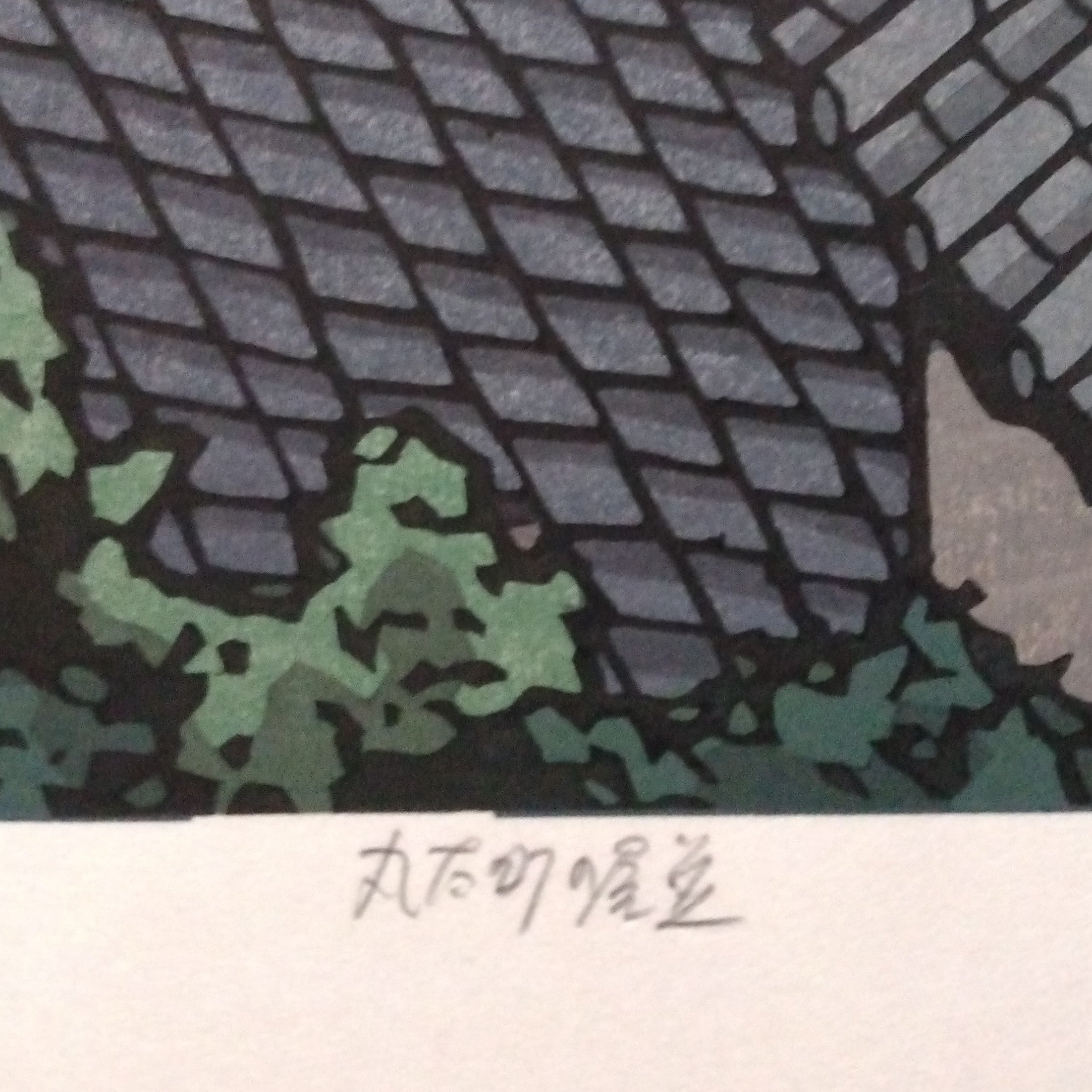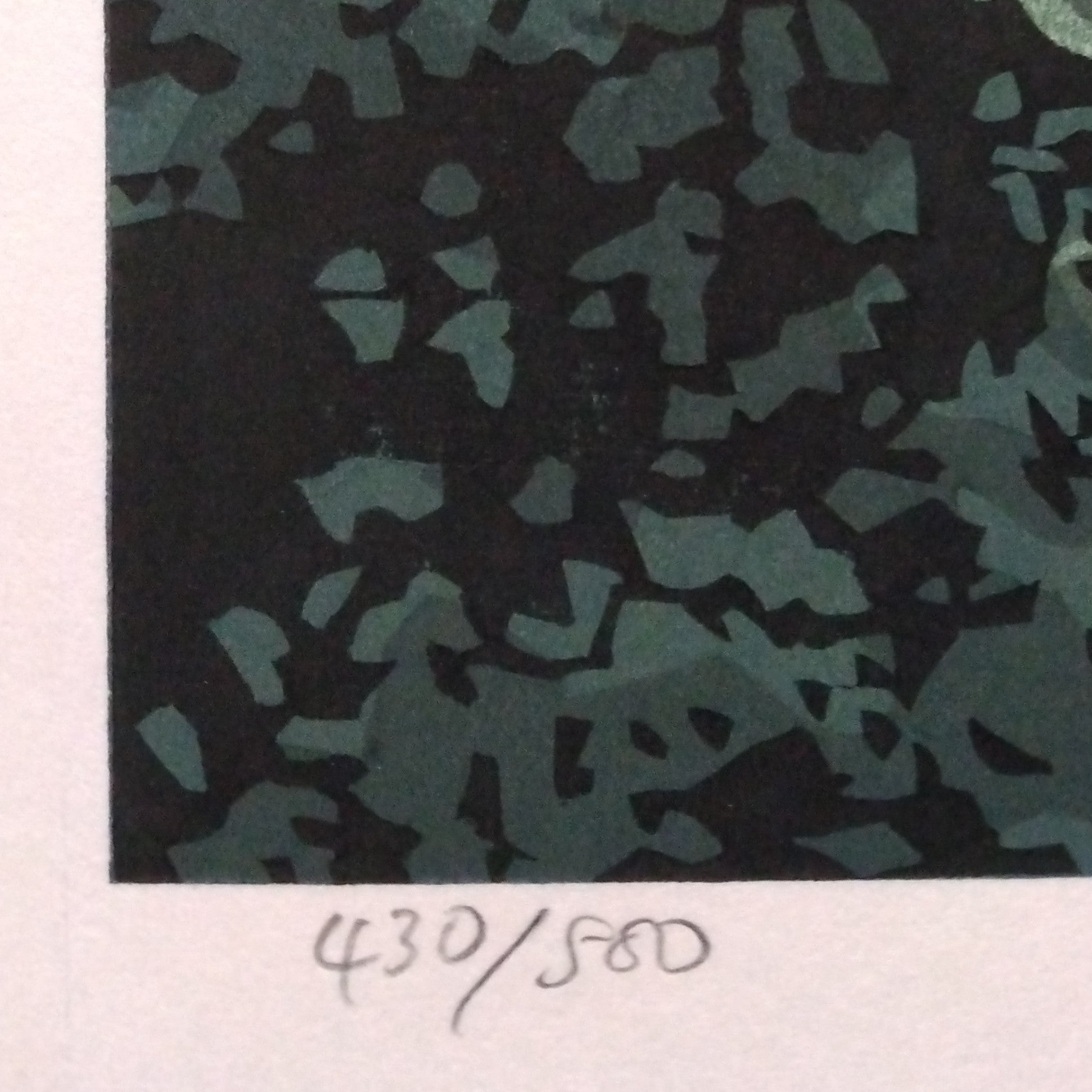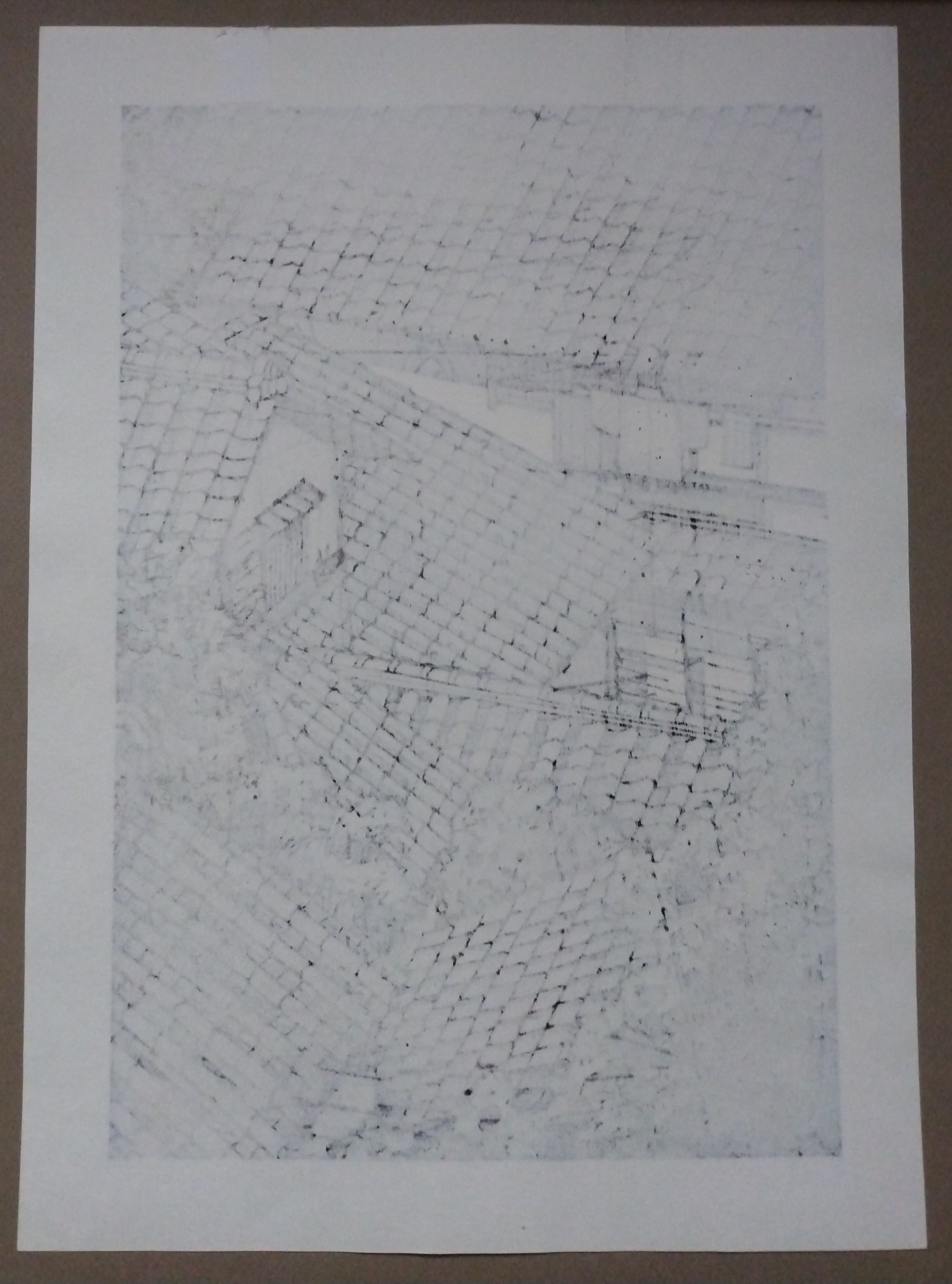Description
Woodblock Print by Katsuyuki Nishijima, "Waves of Roof Tiles in Marutamachi" (Marutamachi no YaNami). Limited edition print, #430 of 500. Features artist's signature and red seal. ca, 1980's. Vertical format; H. 14.75"(37.5cm) X W. 10"(25.5cm). Excellent condition. *Fully matted, framed, & delivered option may be available for local purchasers (I-5 corridor from Seattle to Blaine, WA). Please contact for details.
The image is of clay tiled roofs, a common sight in old Kyoto, in Marutacho (Marutamachi) in central Kyoto's Nakagyo Ward. The overlay of different hues of indigo blue tiles and the close proximity of homes leads to a vision of ocean waves when viewing the architectual landscape from above. Another common sight in Japan is laundry hanging out to dry. Here, we see a happi, a traditional coat worn at festivals, and a tenugui, cloth headband. Since these are both commonly worn during summer festivals, these two items might indicate clues to a summer scene, a rare example of Nishijima including something other than architecture that relates to humans being part of the picture.
Katsuyuki Nishijima, 1945 – present.
Katsuyuki Nishijima was born in Yamaguchi Prefecture at the southwest end of the main island of Honshu. At the age of 19, he started studying the art of woodblock printing making at the Mikumo Publishing Company in Kyoto. By the early 1970’s, he was beginning his career as a Sosaku Hanga (Creative Print) artist. As opposed to traditional woodblock prints of the 19th Century and earlier that were created by a team of artisans composed of designers, carvers, colorists, printers, and publishers; the Sosaku Hanga movement of the 20th Century highlighted the work of artists who self-drew, self-carved, and self-printed their own expressive works. Nishijima is a very popular contemporary Kyoto print artist and his works have been collected and exhibited widely in Japan, the US, and Europe.
Nishijima’s works could be called “romantic” in that there is something idealized and old-fashioned about his images. They rarely contain people; or modern elements such as cars, telephone wires, or even the ubiquitous Japanese trains. They focus on architectural elements such as tiled and thatched rooftops, verandas, noren shop curtains, the wooden latticework in front of Kyoto machiya buildings, stone walls, as well as Japanese rural landscapes. While these could be considered romantic and detached from reality, these elements still exist in modern-day Japan and are what visitors are drawn to and remember in places like Kyoto, Shigaraki, Takayama, and the like. One could say that instead of romanticizing Japanese scenery, he’s actually bringing out the essence of what is beautiful and important in humanity’s view of traditional Japan.







